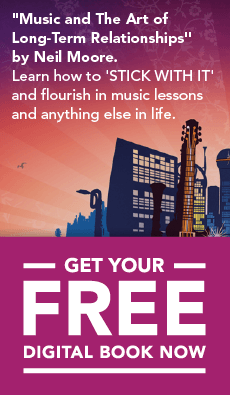Learn to Love Jazz
Found in: Miscellany & Merriment
Next time you’re with a group of people who are at all interested in music, insert the word “jazz” into the conversation and observe how they respond. For every person who pricks up their ears, there will probably be a half-dozen who roll their eyes. Most people have some kind of preconceptions when it comes to jazz. The word will conjure some mental image, often a negative one – scratchy old recordings and murky black and white photos from a long-gone age, intense-looking individuals hunched over their instruments playing ramblings far removed from anything tuneful, or some other prejudgement that crumples up the genre and tosses it into the “irrelevant” basket.
On the occasion of International Jazz Day, we’re here to ask the question, “is our image of jazz fair, and does it really reflect the state of the genre in the 21st century?”. Actually, what we did was ask a bunch of questions of a bunch of people who should know – present-day musicians associated with jazz who also care about progression and relevance. We wanted them to tell us if the name still has meaning today, or if jazz is too amorphous for easy definition.
Esperanza Spalding is surely one of the outstanding artists of the last decade. Check out her wonderful interplay with Bobby McFerrin at the 2011 Grammys.
It was interesting to read the many generous and varied responses to our questions. Many of the people we asked were very comfortable with their categorisation as jazz musicians and proud to be continuing a great heritage. Like classical music, the tradition of jazz is deep enough to have staying power. As pianist Joe Gilman puts it, “When you say “jazz”, and you mean Louis, and Lester, and Bird and Diz and Monk, Miles, Coltrane, and Blakey, you are using the term in a very special and honorable way that is very respectful of the great art form that it is”.
However, all also recognised that staying relevant requires an open mind, and in jazz’s inherent spirit of creative freedom, some artists try to avoid being typecast. Christine Sullivan put it this way: “I prefer not to have a label….I understand its necessity in the marketplace, but in my experience, I have never been attracted to one kind of music, but have phases of intense interest in different musics…I am a singer/vocalist…I enjoy the process of singing and making sound…I am more interested in sound than genres…and more interested in feeling than notation”. For pianist and composer Joe Chindamo, “I object to the imposed limitations of being called a jazz musician, not because I am above jazz, but because most people have a limited view of what it takes to be a good musician who plays jazz at a high level…Ironically I’ve never played better jazz [than I have since moving further from the genre] because it is being informed by all my other musical activities which are challenging me more than ever”.
Some respondents acknowledged jazz’s African-American roots and other original sources, but recognised that it has welcomed so many new influences that almost anything can be brought into the mix. They tend to see what they do as more of a process than a genre. As bassist Ben Robertson explains, “I think it’s an approach to playing above all. I’m not sure this approach fits into a genre, but I think anyone’s accurate perception of this process, if it is jazz, really will reflect their understanding of the process rather than it as an actual genre”. Perhaps, as humans, we are inclined to pigeonhole and categorise. Imogen Manins thinks more openly, in terms of “contemporary improvisation that has grown out of jazz”. As a cellist, she points out that her instrument, not traditionally associated with jazz, “throws you off the jazz path”.
“The spirit of jazz, to me, involves playing in the moment, not playing prepared and fixed ideas” – Steve Sedergreen
What keeps jazz evolving is something about freedom – avoiding being locked down. Christine Sullivan explains, “Every time I sang a piece, I would sing the melody differently each time, and in my own way”, responding to the audience, the venue, and her own feelings. For pianist Steve Sedergreen, “The spirit of jazz, to me, involves playing in the moment, not playing prepared and fixed ideas”. We might sometimes feel a little uncomfortable without prepared and fixed ideas. Often what’s needed to open ourselves to that freedom is some understanding of the process. This might take some education, but also simply a willingness to respond, explore, and deeply listen. Joe Gilman points out: “I think many people want to like jazz, but are intimidated by it because of its complexity and abstract nature. Once they find some artists to listen to that they feel comfortable with and can “digest”, they start learning about the process that is going on…listen with an open mind; relax and have fun; if you don’t care for it, that’s OK, try another artist; appreciate the music for the conversations that the musicians are having; try to follow the stories that are being told”. And as jazz musician and Simply Music Teacher Dane Andrus puts it: “Active listening is a worthwhile venture. It creates mental pathways. If one can listen to jazz on its own terms and not their own, great discoveries can be heard. Jazz also stimulates the intellect. Just like complex food, or complex art, for many it is an acquired taste”.
Here’s Joe’s interpretation of a piece by Neil Moore from the Simply Music Piano Jazz program, from a set he played for us a while ago.
We asked our musicians, “can you give us an example of an experience you’ve had that exemplifies what’s special about Jazz?” I was reminded of a concert with piano legend Ahmad Jamal and his band. After more than twenty years working with each other, they had a sense of communication that occurred to me like they were a single creative organism. Joe Gilman talked about “Musicians on stage from Japan, Russia, the U.S., Brazil, France, and Thailand who can’t speak a word to each other, but can play a blues in ‘F’ and totally understand each other musically, without borders and barriers”. Steve Sedergreen: “To me jazz is special and is about playing honestly and finding your own voice through improvisation…if you are prepared and encouraged to play your own ideas without any interference” Christine Sullivan again: “It is being able to attune yourself with others on stage that creates a real magic….Everyone is elated and raised up by the joy and spontaneity of the music…The perfect balance of mind and spirit..” Ben Robertson: “Saxophonist Lee Konitz – who is an octogenarian – is still practicing, working with his ‘ears’ today and developing them to be ready for the moment – I think that’s pretty special”.
We also asked, “can you advise a jazz neophyte what they might do to help them understand and appreciate a jazz performance – how to listen, what to listen for, what they need to know beforehand? Joe Chindamo responded: “The neophyte has a better chance of understanding it because he has no preconceived ideas. If I had any advice I would hand it out to expert classical musicians. In their case, I think they sometimes switch off their acute ears as soon as they hear jazz because they think it is an entirely different language, or at worst, something fun and lightweight. I would say, listen to it with the same ears that you listen to Beethoven and ignore the rhythm at first. There is no difference in the C chord that he used and the one the jazz musician employs”.
Long before hip-hop, jazz pioneered rapping over a groove. Here the legendary Wynton Marsalis gives us a dose of jazz poetry.
Music these days is a bit like throwing cans of paint on a dance floor and watching the colours mingle. Jazz has bled into so many other genres that you can no longer tell where one ends and another begins. What that means for us music lovers is that to dismiss the innumerable blends and offshoots of jazz is to miss out on many great joys. Jazz, if you have an open mind, is more diverse and eclectic than ever.
Jazz Musicians – Listening Suggestions
We have also asked our musicians to suggest some music that might illustrate the diversity of modern-day jazz, and in case they are too humble, commend examples of their own work to your open mind. We hope that their playlist suggestions offer a chance to see just how rich jazz can be.
Ben Robertson:
- Keith Jarrett’s Köln concert or any of his solo piano concerts are great examples of someone crossing between the boundaries of spontaneous creation and composition generally.
Joe Gilman:
- Snarky Puppy give jazz-funk street cred – make sure you stick around for the truly amazing keyboard solo from around 4.25 in this track “Lingus”.
- Bill Evans brought a classical, melodic sensibility to jazz. The stunning “Peace Piece” is reminiscent of Satie or Debussy – except it’s improvised
Imogen Manins:
- Oregon’s “Aurora” illustrates their spacious, folk-infused sound and fresh approach to instrumentation. When you listen to Ralph Towner’s piano playing, note that his main instrument is guitar!
Dane Andrus:
- If someone likes Chopin, Satie, and Debussy, they might like jazz. Chronologically, I’d start with some classical/jazz efforts of Gershwin (Rhapsody In Blue), Ellington, Claus Ogerman, and go from there.
Christine Sullivan:
- The Bad Plus are both sympathetic and experimental in their exploration of everything from Queen to Stravinsky
- Wayne Shorter has been innovating for decades, the only constant being the lyrical beauty of his saxophone playing. This track is as fresh as it sounded in 1975.
- It’s unsurprising to learn that Vijay Iyer is also a physicist when you hear his experimental approach, pushing boundaries in every direction.
- Trilok Gurtu freely borrows from music cultures across the globe to create jazz world music. This ebullient track has an unusual 11/8 time signature.
Joe Chindamo & Zoë Black
- Joe Chindamo rightly recommended most of his own recordings. His work with Zöe Black explores the boundaries of classical music, although “It Ain’t Necessarily So” from their Dido’s Lament collection is also very respectful of its Gershwin origins, as well as being breathtakingly virtuosic.
And some of our own recommendations:
- Sometimes moody, sometimes quirky, GoGo Penguin’s bewitching sound owes a lot to alternative pop
- The Raah Project: if “orchestral trip-hop” is possible at all, these guys also add an improvisational layer, stretching jazz about as far as it can without breaking
- Cassandra Wilson’s smoky voice just oozes soul, and she is a great innovator, bringing in elements of latin, country and folk music.
We’d love you to share your jazz favourites. And if this article made you want to learn more, let us know in the comments. This is a topic we can explore more deeply if it’s of interest to enough readers.









